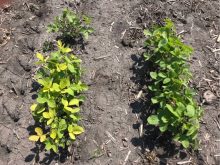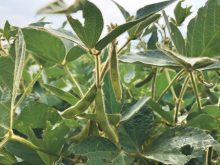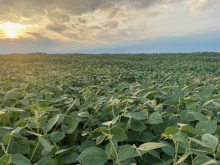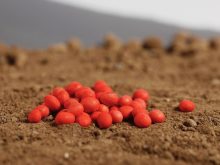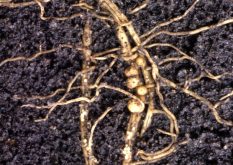Q. What type of pulse inoculant should I use on my farm?
A: When choosing an inoculant, first select the correct species of rhizobia. There are many species, each linked to a specific set of pulse crop hosts. For example, the rhizobia species Bradyrhizobia japonicum will colonize soybean roots but not pea roots.
Inoculant formulation is also important. Liquid and peat inoculants are applied directly to the seed, while granular inoculants are placed in the soil at planting. Liquid inoculants, although easy to handle, should only be used if the field has a history of the pulse crop grown in rotation. Because the liquid carrier offers limited protection for the rhizobia, survivability can be a challenge in suboptimal conditions. Most of the risk centres around desiccation of the rhizobia which can be reduced by planting as soon as possible into moist soil.
Read Also

Claas brings 1000 Series SP forage harvesters to Canada
In mid-August, Claas unveiled its new line of Jaguar forage harvesters at an event in Visalia, California, deep in the heart of that state’s dairy region.
Peat inoculants can be messier to handle, but they tend to perform better than liquid inoculants. Peat carriers provide more protection to the live rhizobia, but this protection also has limits, so it’s still important to plant soon after application.
Peat inoculants are available in sterile and non-sterile formulations. The peat sterilization process increases cost but reduces the amount of undesirable microorganisms present. This results in higher concentrations of rhizobia and generally lower application rates.
When using a seed treatment, ensure it’s compatible with your peat or liquid inoculant. Compatibility charts are available from your retailer or the inoculant manufacturer.
Granular inoculants generally produce the best results, but they tend to be the most expensive and require a separate tank for application. Granular inoculants cannot be mixed with dry fertilizer as direct contact with fertilizer can be harmful to the rhizobia.
When planting soybeans, double inoculating may be advisable. If the field has a limited history of soybeans or hasn’t been planted to soybeans in several years, using two types of inoculant (e.g. liquid on the seed, granular in the seed row) is often beneficial.
With all formulations, remember that inoculants contain live organ- isms. Store in a cool, dry area and handle with care.
Stacie Yaremko, P. Ag, CCA, is a manager of agronomic services with Nutrien Ag Solutions in northern Alberta.




